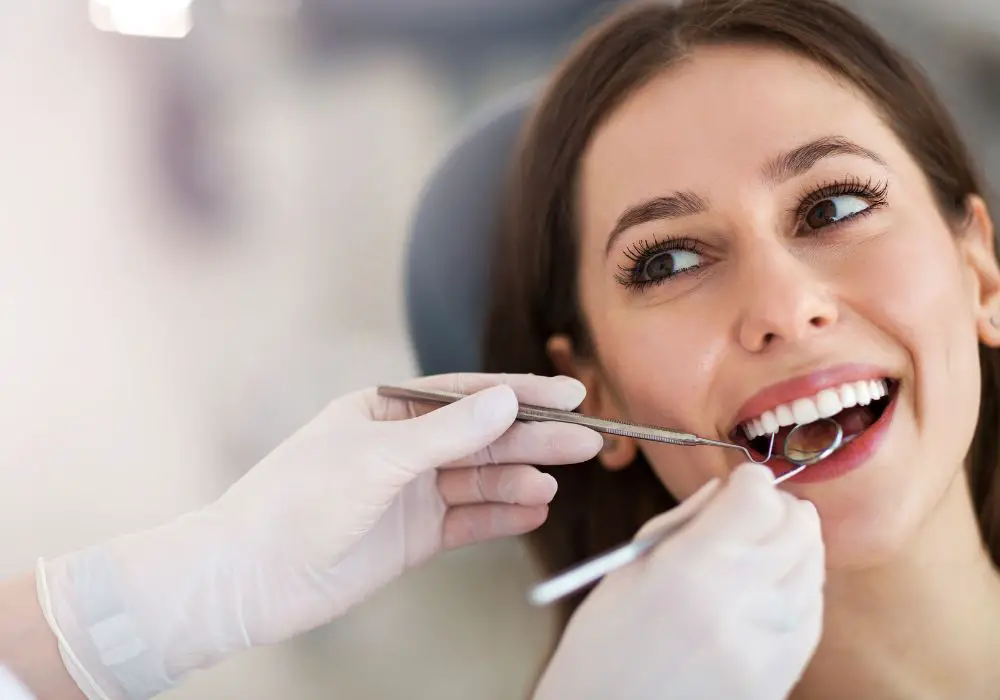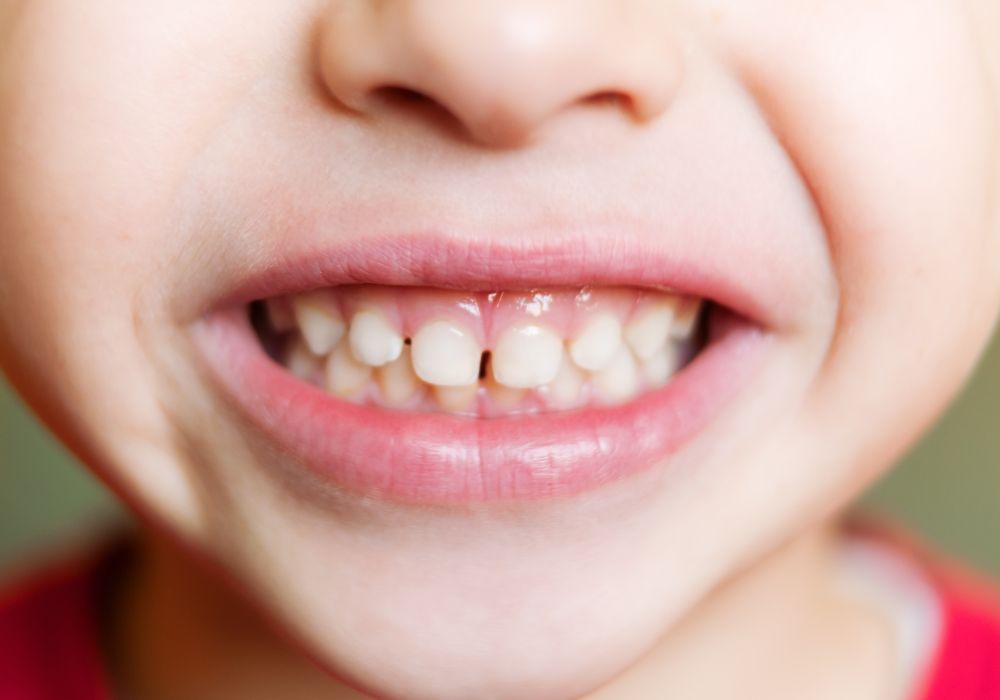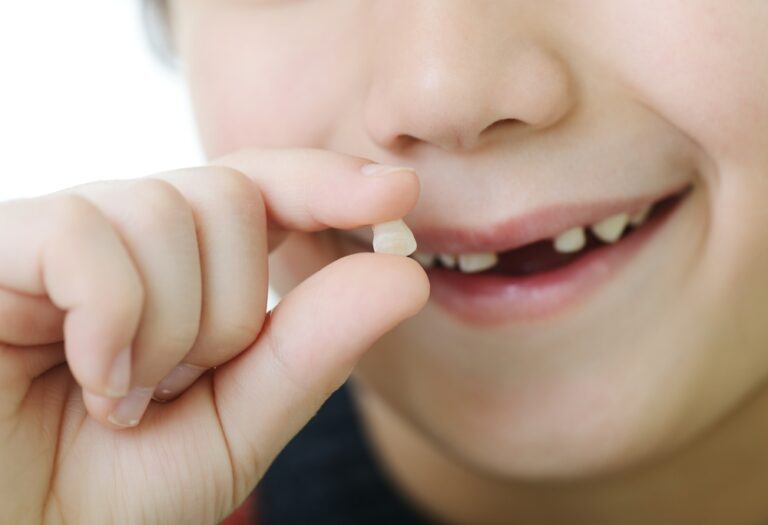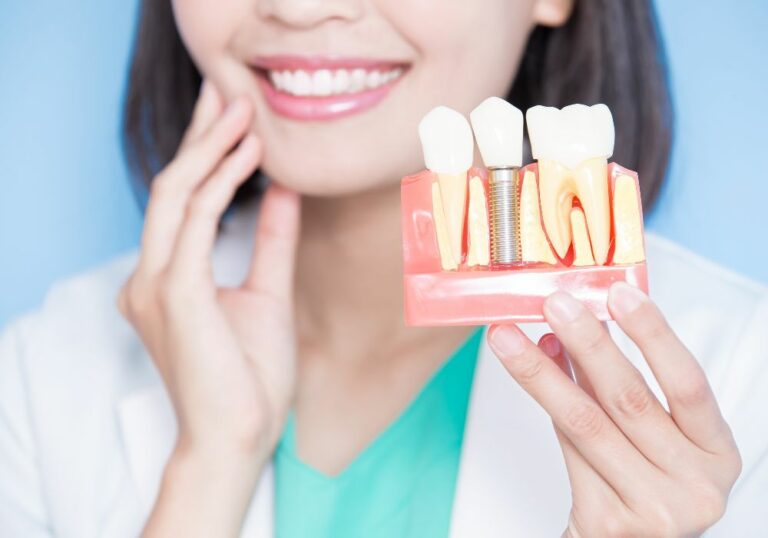Have you ever wondered why you had cute little baby teeth fall out, only to be replaced by a bigger and permanent set of adult teeth? Or maybe you’re curious why those final wisdom teeth emerge last at the back of your mouth – often causing problems and requiring removal?
Understanding the process of multiple sets of teeth provides insight into the amazing intricacy of the human body. So let’s explore why you’ve experienced three rounds of teeth through your life!
The 3 Sets of Teeth Humans Develop
Most humans develop three sets of teeth over their lifetimes:
- Primary teeth (baby teeth)
- Permanent teeth (adult teeth)
- Wisdom teeth (third molars)
Over a lifetime, a person will have two sets of teeth. The first set to develop are the primary or baby teeth.
Primary teeth start to form during the embryonic stage while the baby is still developing in utero. The teeth then begin to erupt through the gums at around 6-10 months of age.
Primary teeth help babies bite, chew and tear food as they transition to solid foods. They also promote proper speech development and maintain the spacing needed for permanent teeth.
Young children have a total of 20 primary teeth – 10 in the upper jaw and 10 in the lower jaw. The primary teeth consist of:
- 4 central incisors (front middle teeth)
- 4 lateral incisors (front side teeth)
- 4 canines (pointy teeth near incisors)
- 4 first molars (back teeth)
- 4 second molars (backmost teeth)
Around age 6, the permanent or secondary teeth start developing behind the primary teeth. The first permanent teeth to emerge are the central incisors. Slowly over several years, the permanent teeth erupt in sequence, eventually replacing all the primary teeth.
Adults have 32 permanent teeth, including:
- 8 incisors (front)
- 4 canines (sharper teeth near incisors)
- 8 premolars (middle back)
- 12 molars (far back grinding teeth)
The permanent teeth are larger, stronger, and designed to last a lifetime with proper dental care.
The final set of teeth to develop are the wisdom teeth, or third molars. These emerge last, between the late teens and early 20s.
Most people have 4 wisdom teeth, located in the far back of the mouth – 2 upper wisdom teeth and 2 lower wisdom teeth. They are the last teeth to erupt because the jaws have finished growing by this age.
However, wisdom teeth often cause problems due to lack of adequate space and are frequently extracted. Some people naturally have room to retain healthy wisdom teeth long term.
Why Do We Get Baby Teeth First?
Baby teeth form first because they are well suited to a young child’s mouth and needs:
- The jaws of infants and toddlers are too small and weak to effectively chew with large permanent teeth.
- Primary teeth help children bite off and grind foods as they transition to solid foods and wean off soft baby foods. The smaller teeth allow kids to gradually adapt to chewing tougher foods.
- The size and spacing of baby teeth promote proper speech development and language skills. This aids in social interaction.
- Baby teeth maintain the spacing needed for permanent teeth to eventually replace them. If baby teeth are lost prematurely, the other teeth may shift and cause problems for incoming permanent teeth.
Overall, baby teeth form first to fill the small jaw size of a developing child, promoting chewing, speech and spacing for future permanent teeth.
Why Do Adult Teeth Replace Baby Teeth?
As a child’s jaws grow larger, adult teeth are needed instead of baby teeth for the following reasons:
- Permanent teeth are bigger, stronger, and more durable than baby teeth. Their roots extend deeper into the jaw bone for added support.
- Adult teeth are designed to chew and tear tougher foods needed for nutrition through adulthood. Their larger size better fits the grown jaws.
- The chewing surfaces of permanent teeth adapt to changing diet. The different cusps and grooves suit mature food choices.
- Properly aligned permanent teeth support facial structure and profile. This contributes to a good smile and self-image.
- With good oral hygiene and preventive care, permanent teeth can last many decades, often over 50 years. Baby teeth are meant to be temporary.
The coordinated transition from primary teeth to adult teeth allows humans to properly eat, speak and smile from childhood through adulthood.
Tooth Development Process

Teeth form gradually within the gums before emerging through the surface. A complex physical and molecular process guides tooth development from start to finish.
Tooth Formation Begins In Utero
Tooth development in humans begins while the baby is still an embryo developing in the mother’s womb.
At around 6 weeks of gestation, thickened epithelium forms along the jaws creating a dental lamina, essentially a “tooth band.” This lamina outlines where the future teeth will develop.
By around the 14th week of pregnancy, localized swellings of tissue from the dental lamina mark the beginning phases of tooth formation. These swellings are called tooth buds and each swelling eventually forms one specific tooth.
Tooth Buds Guide Crown Formation
The tooth buds contain a collection of epithelial cells. Through chemical signaling interactions, these cells communicate with neural crest-derived mesenchymal cells within the underlying jaw bone and gums.
This “cross-talk” between the epithelium and mesenchyme drives the tooth buds to increase in size and continue differentiating and shaping into specific tooth types – incisors, canines, premolars and molars.
By approximately the 20th week of pregnancy, the tooth buds have formed into more distinct structures resembling miniature tooth crowns. At this stage, buds for the future wisdom teeth may also begin to form.
Crown and Root Development
After the initial crown formation, the next phase is mineralization as the layers of dentin and enamel develop to form the crown surface. Initially during these prenatal stages, the tooth has no root structure and remains entirely buried in the gums.
After birth, root development continues as Hertwig’s epithelial root sheath guides the formation of cementum and dentin to form the roots. The roots grow longer gradually, anchoring the tooth in the bone socket.
Eventually, the full crown and root are formed under the gums. The tooth then erupts through the gums and into the mouth.
Behind the primary teeth, the permanent teeth follow similar stages of crown and root development before emerging.
Why Baby Teeth Fall Out?

Baby teeth are intended to be lost and replaced by permanent teeth. This process depends on the timed root resorption and dissolution of the primary teeth.
Roots Dissolve as Permanent Teeth Develop
The baby teeth roots begin dissolving around age 3-4. At this point, enamel and dentin production stops on the root surfaces and inner root cells become activated.
These cells remove the root structure from the inside out in a process called root resorption. The roots gradually become porous and diminish in size.
At the same time, the incoming permanent teeth just underneath apply pressure that adds to the resorption process.
Destabilization and Tooth Loss
As the roots shorten from resorption, the baby teeth become looser as less root surface remains to anchor them in the bone.
Eventually, only a small piece of root may be left. The destabilized crown easily detaches and falls out with normal biting forces or wiggling.
This natural process allows the primary teeth to detach once the permanent teeth are ready to take their place. Most baby teeth fall out on their own this way, but some may need gentle extraction if they are stubborn.
Wisdom Teeth – Common Problems
While baby teeth are lost on purpose, wisdom teeth are often removed due to problems. Here’s why wisdom teeth commonly require extraction:
- Poor Position – Many people’s jaws are too small to accommodate these large molars. The wisdom teeth become impacted, angled, or unable to fully emerge.
- Pericoronitis – Bacteria and debris can enter around partially erupted wisdom teeth, causing gum infection called pericoronitis.
- Cysts/Tumors – Cysts or rare tumors may develop around impacted wisdom teeth, necessitating removal.
- Tooth Crowding – Erupting wisdom teeth can displace and crowd nearby teeth. This can undo orthodontic alignment.
- Decay Risk – The uneven chewing surfaces of partially visible wisdom teeth are prone to plaque accumulation and decay.
- Gum Disease – Poor cleaning access leads to periodontal problems.
- Root Resorption – Pressure from wisdom teeth can destroy roots of neighboring teeth.
Due to these risks, most dentists recommend wisdom tooth extraction between ages 17-25 if inadequate space exists or problems seem likely. Some patients can retain healthy wisdom teeth long term if no issues develop.
Maintaining Dental Health Through Life

While humans transition through 3 sets of teeth, maintaining good oral health is essential at every stage:
Caring for Baby Teeth
- Brush gently twice daily with fluoride toothpaste starting around age 2
- See a pediatric dentist on schedule to monitor tooth development
- Avoid sharing utensils or cleaning pacifiers with mouth to reduce decay risk
Caring for Permanent Teeth
- Practice proper daily brushing and flossing technique
- Get professional cleanings and exams every 6 months
- Use mouthguard during sports to avoid injury
- See a dentist as soon as possible for injuries, pain, or other concerns
Making Wisdom Tooth Decisions
- Get evaluated by your dentist around late teens
- Discuss whether removal is advised based on room available and predicted problems
- Extract between ages 17-25 if recommended to avoid future complications
- Take post-op precautions to allow smooth healing after surgical extractions
With proper dental care through each stage of development, a healthy and functional smile can be maintained for a lifetime! Let me know if you would like me to expand on any part of this article further.
Frequently Asked Questions
How many teeth do humans have during their lifetime?
Humans can develop a total of 52 teeth if all 4 wisdom teeth emerge. This includes 20 primary teeth and up to 32 permanent teeth.
What causes baby teeth to fall out?
Baby teeth fall out due to a coordinated process of root resorption as permanent teeth develop. The roots dissolve from the inside, allowing the crown to become loose and detach.
Should wisdom teeth be removed preventatively?
Many dentists recommend removal between 17-25 years before problems occur. But some people can retain healthy wisdom teeth long-term if space allows. Consult your dentist.
What are retained baby teeth?
Retained baby teeth fail to shed. This prevents permanent teeth from erupting. It usually requires extraction by a dentist.
Do people get new teeth every few years?
No, humans only get 2 sets of teeth in a lifetime – baby and adult. Proper dental care is needed to maintain the permanent adult teeth for many decades.







